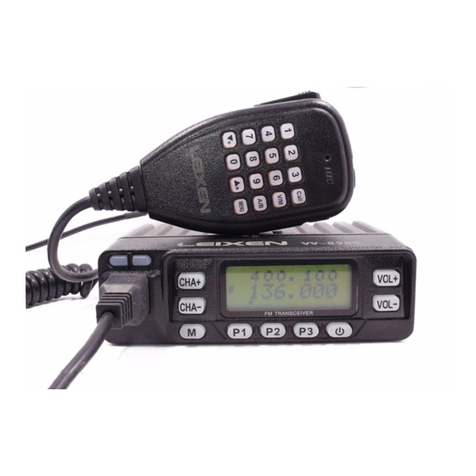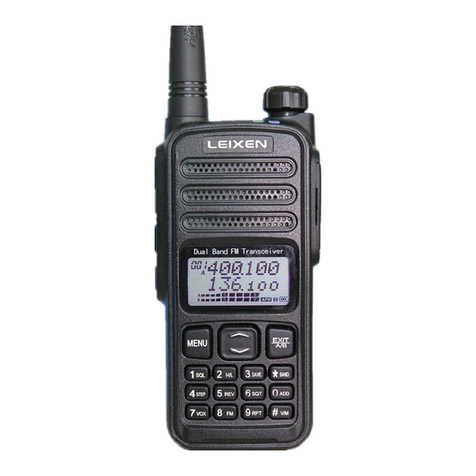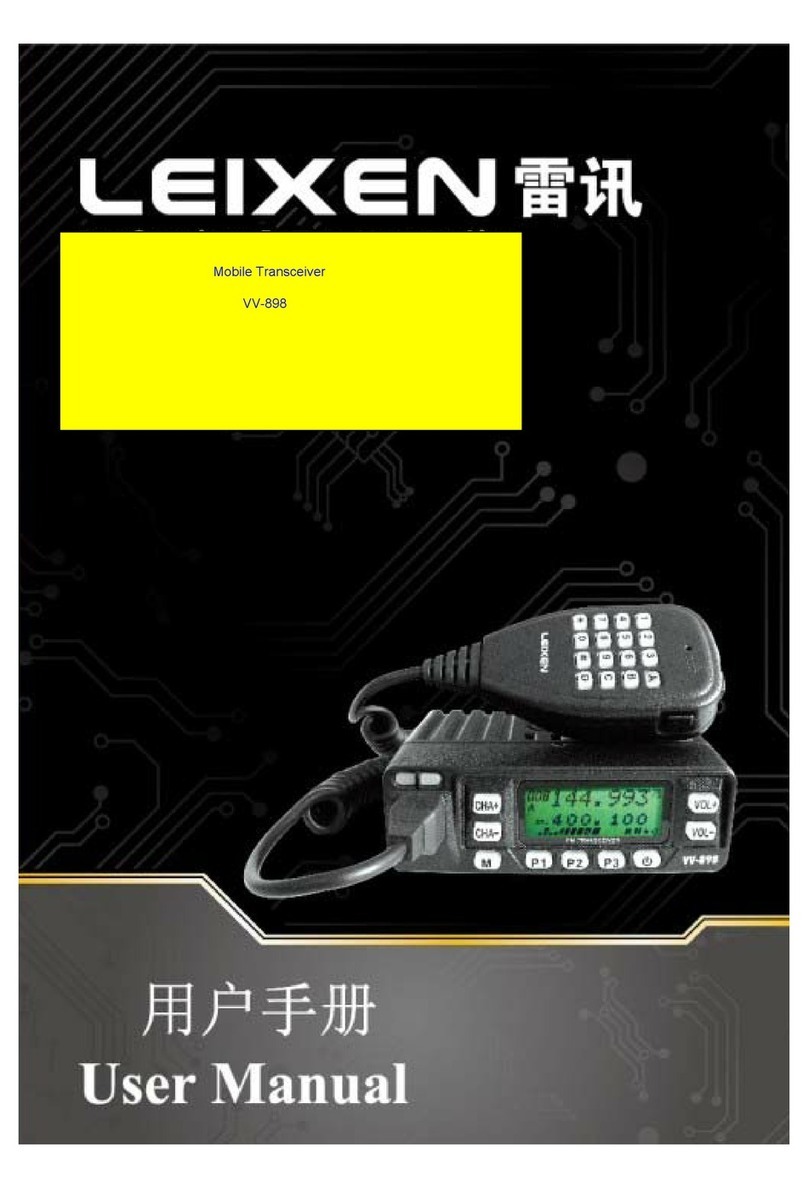11
12
Choose Channel ~ The indicator shows red when transmitting.
How to choose a channel? As following:
1, Store your favorite channels through programming
software as Memory Channels in advance, you can
select the channel you want to communicate in the
MR mode directly.
2, Input the frequency value by using the DTMF
keypad in the VFO mode.
3, Press "CHA+" or "CHA-" key to choose the
frequency in the VFO mode.
Note: This radio has a dual-waiting function, you can switch
AIB channel by key C (AIB switch key) on the DTMF
microphone. A-channel can only be in the MRlCH memory
channel, B-channel can be in VFO frequency channel or the
MRlCH memory channel. Please refer to page 40-41 of the
user-defined key function of AIB switch and VFOIMR switch.
Transmitting and receiving
Press and hold the PTT key of the microphone and
speak to start a call. Release the PTT key to end the
call.
~ Please use Low Power to communicate if the
communication distance is nearby, in order to
reduce radiation and save electricity.
~ Keep the microphone about 5 cm from mouth,
with the usual volume to speak, to get the best
sound quality.
Function Menu Operation
Auto Power Off(APO)
Auto power off means that when the radio reaches the
pre-set time on standby state (without any operation),
APO would turns the radio off automatically. You can
set the APO time by Menu 01. Time can be set to
OFF(disable) / 10 minutes / 20 minutes / 30 minutes /
40 minutes / 50 minutes / 60 minutes / 90 minutes / 2
hours / 4 hours / 6 hours / 8 hours / 10 hours / 12
hours /14 hours /16 hours. The radio would display a
mE
icon when APO function is open. Default is
OFF(disable).
APRO(APRO)
Voice processing features include: Disabled, voice
compressor or and scrambler. Each channel can be set
individually. You can set voice processing mode by
Menu 02: Disabled (OFF), voice compressor (Comp),
and voice scrambler (Sera). Default is OFF.
Busy Channel Lock (BC Lock)
When a Channel set the "BC LOCK" function, TX































